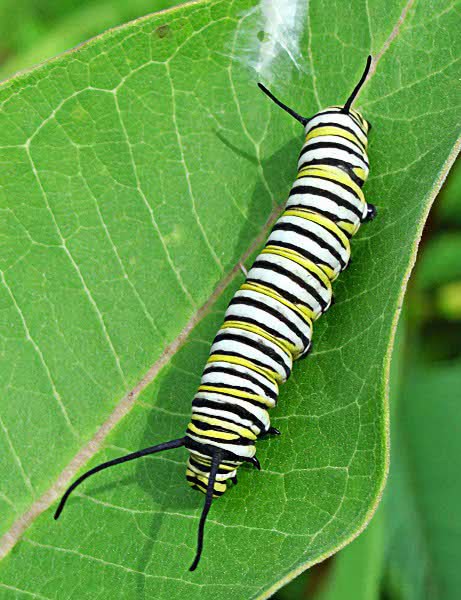 Autumn has finally arrived in the Midwest, and many of our plants are preparing for the long winter months ahead. The green pigment in leaves, Chlorophyll, is destroyed with increase of cooler temperatures at night time and the decrease in the amount of daylight. Plants have remaining pigments in their leaves such as Anthocyanins (purples), Carotenoids (reds/oranges), and Xanthophylls (yellows) that are shown once the Chlorophyll is gone, and on some species, these colors look spectacular in the fall! There are many trees, shrubs, and perennials that show good fall color, but here are a few trees and shrubs that are hardy, adaptable, and work well in the landscape
Autumn has finally arrived in the Midwest, and many of our plants are preparing for the long winter months ahead. The green pigment in leaves, Chlorophyll, is destroyed with increase of cooler temperatures at night time and the decrease in the amount of daylight. Plants have remaining pigments in their leaves such as Anthocyanins (purples), Carotenoids (reds/oranges), and Xanthophylls (yellows) that are shown once the Chlorophyll is gone, and on some species, these colors look spectacular in the fall! There are many trees, shrubs, and perennials that show good fall color, but here are a few trees and shrubs that are hardy, adaptable, and work well in the landscapeMaples - For years, Maples have been popular shade and parkway trees, and they still are today. They are also famed for their beautiful autumn color of bright reds and oranges. However, not all maples produce these hues in the fall. For example, Norway Maples (Acer platanoides) have dull yellow color when they turn late in the fall. Sugar Maple (Acer saccharum) has bright red and orange hues in the leaves from late September-mid October. They make a great shade tree for the yard, and are on the slow side of fast as far as their growth rate. They thrive in established areas, but avoid newly constructed areas. For a faster growing shade tree, Red Maple (Acer rubrum) and Freeman Maple (Acer x freemanii) are great choice maples with good fall color. These adaptable trees can tolerate many different soil conditions, and make great shade and parkway trees.
Serviceberries - One of my favorite ornamental trees, Serviceberries are famed for their spring flower display and the summer fruits that seem to draw flocks of Robins and Waxwings from all around. However, our native Serviceberries produce extraordinary red and orange fall color that make a standout in the landscape. Apple Serviceberry (Amelanchier x grandiflora) and Allegheny (Amelanchier laevis) make lovely small trees while Shadblow (Amelanchier canadensis) makes a great large shrub. Serviceberries perform well in sun to shade, but will produce vibrant fall color in full sun.
Chokeberries -These native shrubs have a tough and adaptable nature that can be applied to many landscape situations. They are naturally found in swampy areas, but can tolerate drought once established. Their glossy deep green leaves turn bright red and orange in the fall. Black Chockeberry (Aronia melanocarpa) and Red Chokeberry (Aronia arbutifolia) are the only two representatives of the family. Besides their great fall color, they also provide clusters of white flowers in late spring, and black or red fruits that are an emergancy food source for birds in the winter. True to their name, the fruits are very bitter and make you want to choke (true from experience).
These great plants are just a few of what we have to offer for plants to brighten up your landscape this fall, and for many more to come!








+Fall+Color+(6)+-+Copy.JPG)